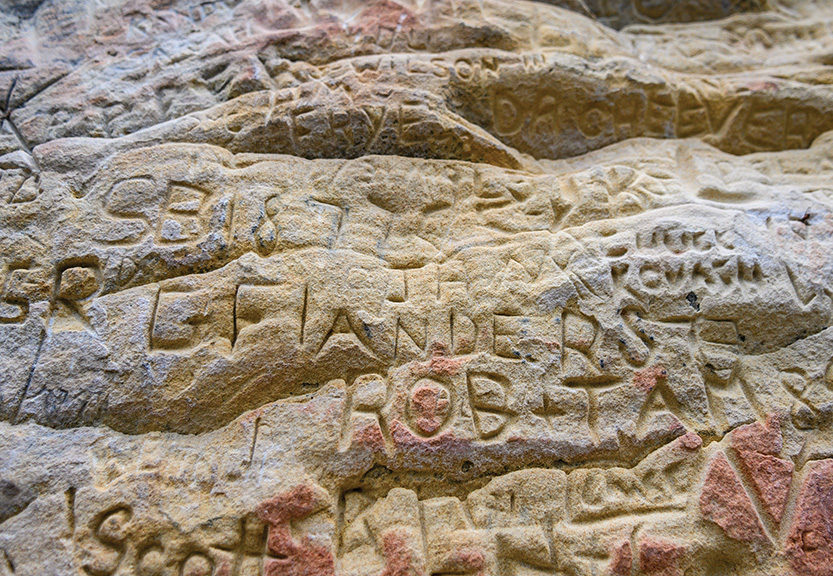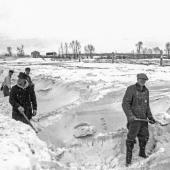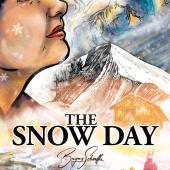Postcard from the Past
Early inscribers at History Rock.
When we explore or travel we want to share the experience with others and remember it for years to come. We tag, post, tweet, or twitch (yeah... I'm not social-media savvy). The early settlers of our valley had the same desires. They had a need to leave behind something permanent, saying "I was here." But instead of Instagram posts, they carved their initials into trees and pictures into stone.
Hyalite Canyon shelters one of these 3D postcards from the past—its name: History Rock. This large boulder is roughly the same size as House Rock in the Gallatin, and etched into its sandstone body are tiny animals, peace signs, doodles, hearts, initials, dates, and names. These inscriptions offer the present a connection to the past.
The oldest decipherable signature comes from George Flanders in 1877. Flanders, a Civil War veteran arriving in Montana via Missouri River steamboat in 1866, spearheaded a Bozeman logging operation. In 1877, his crew of ten lumberjacks spent the winter hand-sawing timber and clearing a meadow up History Rock Creek. In the spring, with a swollen stream to run logs down, he opened his sawmill—Flanders Mill—at the entrance of the canyon.
Flanders had three children: George Jr., Laura, and Clara—who once made clothes for the family flock of ducks. As the story goes, one day Clara found the flock to be dead, so she, her sister, and the family cook plucked the down from their bodies—only to find out later that the ducks were not in fact deceased, only passed out drunk from eating the seeds of the chokecherry brandy. After waking from their slumber, they ran about the yard featherless in a quacking ruckus. History Rock displays Clara's name with 1909 and 1910 dates. With a diligent inspection one will see that she returned to add her married name in 1934 as Mrs. Clara Vestal.

Hyalite Canyon now boasts a paved road and easy access to History Rock, something the Flanders never had. The route in was initially impassable even for packhorses. George Flanders built the logging road that would eventually open the upper canyon to visitors to this day.
The flat side of History Rock holds the most inscriptions; however, the two smaller sandstones nearby have engravings as well. While slowly tracing the hollowed lines with a finger, it is energizing to think that someone stood in the exact the same place, over 140 years prior. Only imaginations can fill in why they painstakingly scratched their remembrance into our communal postcard.
Patti Albrecht owns Earth's Treasures Museum Gallery in downtown Bozeman. Rachel Phillips at the Gallatin History Museum assisted with researching this article.













